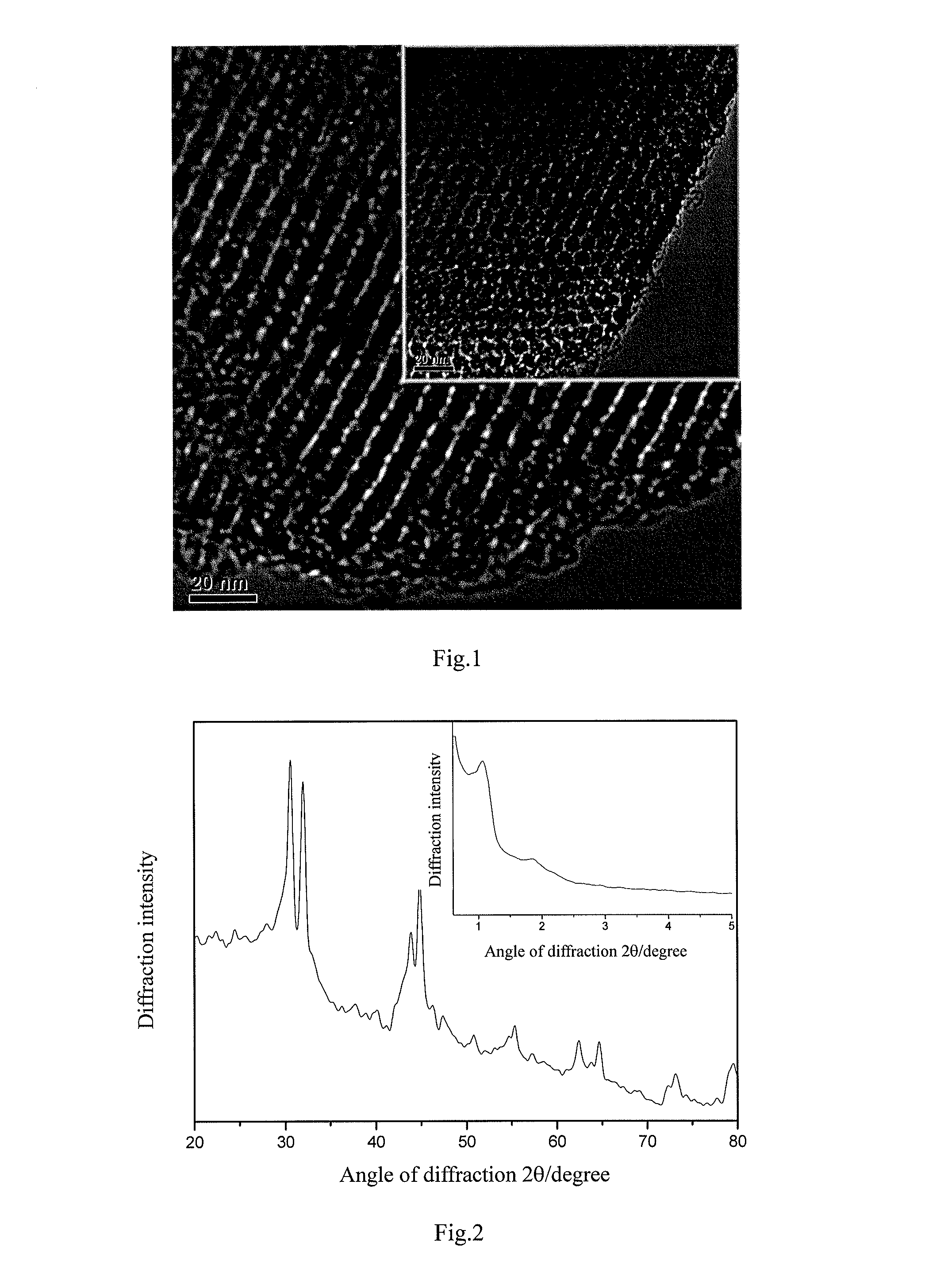Tin carbon composite, method for preparing same, battery negative electrode component comprising same, and battery having the negative electrode component
a technology of tin carbon composite and negative electrode, which is applied in the direction of non-aqueous electrolyte accumulator electrode, cell component, electrical apparatus, etc., can solve the problems of low thermodynamic stability, large capacity reduction, and high surface reaction activity of dispersed nanoparticles, and achieve excellent electrochemical performan
- Summary
- Abstract
- Description
- Claims
- Application Information
AI Technical Summary
Benefits of technology
Problems solved by technology
Method used
Image
Examples
example 1
[0037]In 6 g of tetrahydrofuran, were dissolved 0.6 g of stannous chloride and 0.6 g of a soluble resole resin having a molecular weight of 300 to 500. Then, 0.4 g of a mesoporous molecular sieve SBA-15 was added thereto. The mixture was stirred for 1 h, dried, and then heat-treated at 500° C. for 4 h in a nitrogen gas atmosphere. The heat-treated material was dispersed in 20 mL of a 0.2 mol / L aqueous glucose solution.
[0038]The dispersion was subjected to hydrothermal treatment at 180° C. for 4 h, subjected to centrifugal separation, washing, and drying, and then heat-treated at 500° C. for 4 h in a nitrogen gas atmosphere. The heat-treated material was dispersed in 80 mL of a 2 mol / L aqueous sodium hydroxide solution. The dispersion was stirred for 12 h, subjected to centrifugal separation, washing, and drying, and then subjected to heat-treatment at 700° C. for 4 h in a nitrogen gas atmosphere to thereby obtain a tin / carbon mesoporous composite for a lithium ion battery negative e...
PUM
| Property | Measurement | Unit |
|---|---|---|
| pore size | aaaaa | aaaaa |
| weight ratio | aaaaa | aaaaa |
| current density | aaaaa | aaaaa |
Abstract
Description
Claims
Application Information
 Login to View More
Login to View More - R&D
- Intellectual Property
- Life Sciences
- Materials
- Tech Scout
- Unparalleled Data Quality
- Higher Quality Content
- 60% Fewer Hallucinations
Browse by: Latest US Patents, China's latest patents, Technical Efficacy Thesaurus, Application Domain, Technology Topic, Popular Technical Reports.
© 2025 PatSnap. All rights reserved.Legal|Privacy policy|Modern Slavery Act Transparency Statement|Sitemap|About US| Contact US: help@patsnap.com


